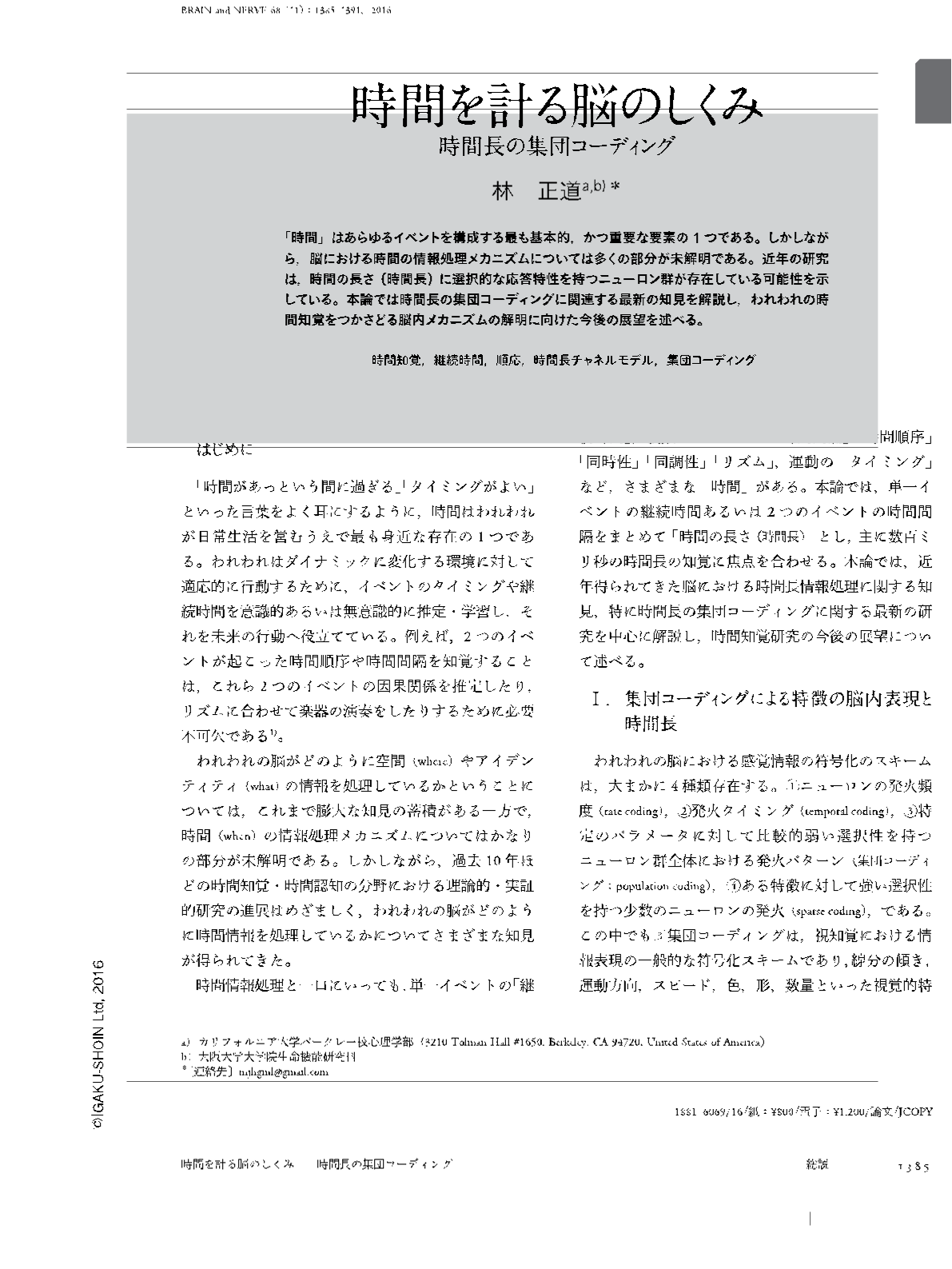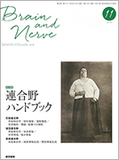Japanese
English
- 有料閲覧
- Abstract 文献概要
- 1ページ目 Look Inside
- 参考文献 Reference
「時間」はあらゆるイベントを構成する最も基本的,かつ重要な要素の1つである。しかしながら,脳における時間の情報処理メカニズムについては多くの部分が未解明である。近年の研究は,時間の長さ(時間長)に選択的な応答特性を持つニューロン群が存在している可能性を示している。本論では時間長の集団コーディングに関連する最新の知見を解説し,われわれの時間知覚をつかさどる脳内メカニズムの解明に向けた今後の展望を述べる。
Abstract
Temporal processing is crucial in many aspects of our perception and action. While there is mounting evidence for the encoding mechanisms of spatial (“where”) and identity (“what”) information, those of temporal information (“when”) remain largely unknown. Recent studies suggested that, similarly to the basic visual stimulus features such as orientation, motion direction, and numerical quantity, event durations are also represented by a population of neurons that are tuned for specific, preferred durations. This paper first reviews recent psychophysical studies on duration aftereffect. Changes in the three parameters (response gain, shift, and width of tuning curves) are then discussed that may need to be taken into account in the putative duration-channel model. Next, the potential neural basis of the duration channels is examined by overviewing recent neuroimaging and electrophysiological studies on time perception. Finally, this paper proposes a general neural basis of timing that commonly represents time-differences independent of stimulus types (e.g., a single duration v.s. multiple brief events). This extends the idea of the “when pathway” from the perception of temporal order to the general timing mechanisms for the perception of duration, temporal frequency, and synchrony.

Copyright © 2016, Igaku-Shoin Ltd. All rights reserved.


